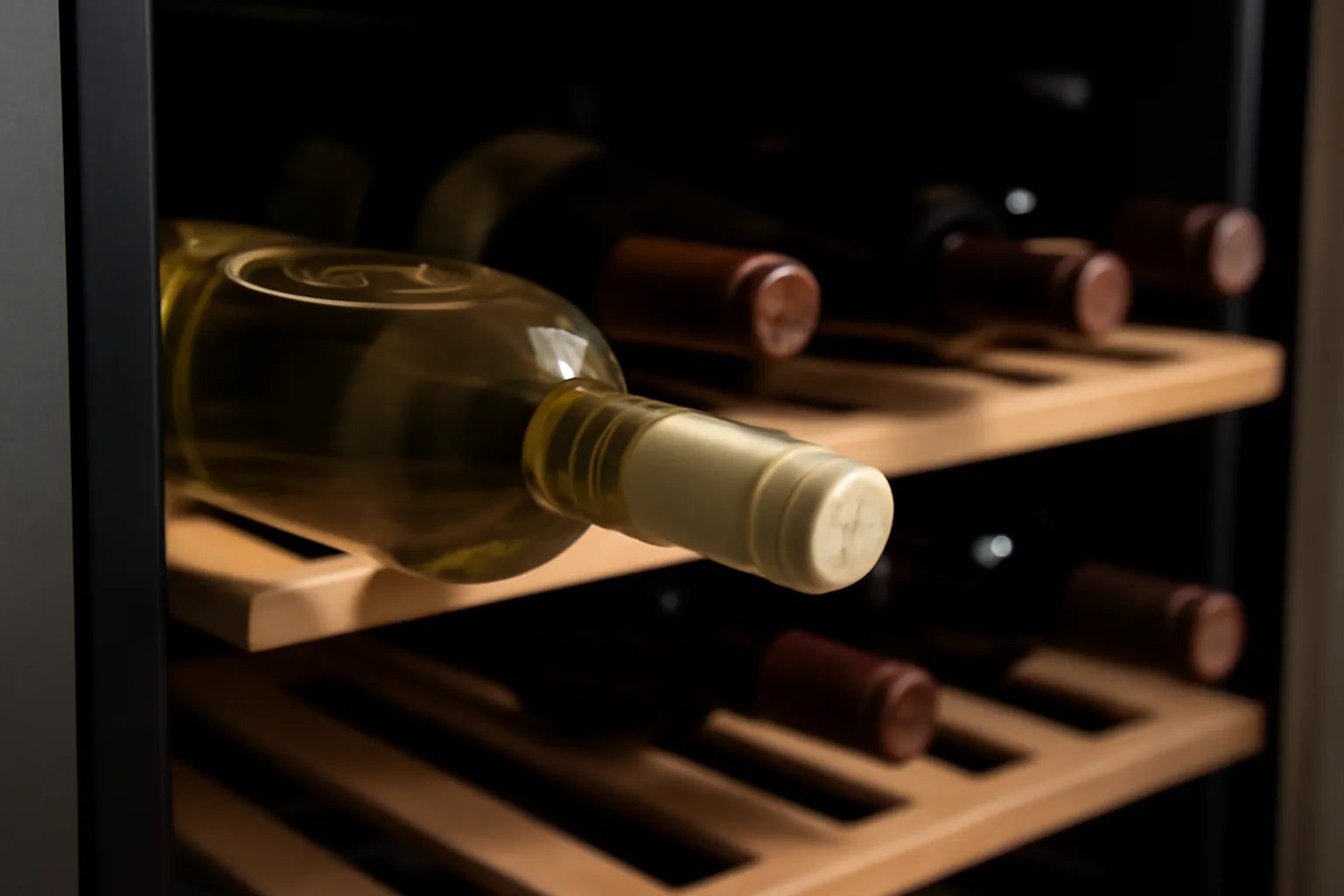How long can you store white wine? What temperature keeps its flavor intact? And how do wine lovers ensure their bottles age gracefully? This comprehensive guide explores everything you need to know about white wine storage, from ideal conditions to shelf life tips.
White wine storage period
When it comes to white wine, shelf life varies dramatically depending on the type of wine and how it’s stored. Unlike most red wines, which are made to age, white wines are generally best enjoyed young—though exceptions do exist.
How long does white wine last?
Here’s a breakdown of typical white wine storage periods
-
Light-bodied whites (e.g., Pinot Grigio, Sauvignon Blanc): 1–2 years
-
Full-bodied whites (e.g., Chardonnay): 2–4 years
-
High-quality aged whites (e.g., White Burgundy, German Riesling): 5–15 years
-
Sparkling whites (e.g., Champagne): 1–3 years non-vintage, 5–10+ years vintage
In my experience as a sommelier-turned-home-collector, even reputable vintages can go downhill if not stored properly. I once stored a 2010 Chablis improperly in a kitchen cabinet—three years later, it was undrinkable.
Signs your white wine has expired
Don’t drink it if you notice:
-
Brownish or dull yellow color
-
Vinegar-like or musty smell
-
Flat or overly sour taste
These are red flags that the wine’s chemical structure has deteriorated.
How to extend white wine’s life
To maximize its life:
-
Keep bottles away from sunlight.
-
Store horizontally to keep corks moist.
-
Avoid temperature fluctuations.
Call to action Want to know how long your favorite white wine can last?
👉Check Your Wine’s Lifespan Here👈
White wine storage
Understanding how to store white wine is just as crucial as knowing how long it lasts. Storage isn’t merely a matter of placing bottles on a shelf—it involves creating an environment that preserves flavor, aroma, and texture.
Key conditions for ideal white wine storage
-
Darkness – Light exposure causes premature aging.
-
Humidity – Aim for 60–70% to prevent corks from drying.
-
Minimal vibration – Movement disturbs sediments and aging.
-
Horizontal position – Keeps cork in contact with wine to prevent drying.
From my experience managing a small wine cellar for a local bistro, I learned that even modest collections benefit from professional racks or coolers. I once installed a $150 wine fridge, and the difference in flavor retention was dramatic—especially for sensitive varietals like Viognier.
Storage methods: From casual to connoisseur
-
Short-term (under 1 month) Kitchen cabinet away from heat.
-
Mid-term (1–6 months) Pantry or wine rack in a cool, dark room.
-
Long-term (6+ months) Wine cooler or cellar with controlled conditions.
Investing in proper storage is more than vanity—it’s a flavor insurance policy. You wouldn’t store milk on your windowsill; wine deserves the same respect.
Call to action Curious about setting up your own home wine storage setup?
White wine storage temperature
Of all storage factors, temperature plays the most critical role in white wine’s longevity and taste profile. A few degrees too warm or cold, and your wine may degrade well before its time.
What is the ideal temperature for white wine storage?
-
Optimal range 45°F to 55°F (7°C to 13°C)
-
For sparkling whites: Aim closer to 45°F (7°C)
-
For full-bodied whites: Stick to 50°F–55°F (10°C–13°C)
Temperature stability is key—fluctuations cause the wine to expand and contract, which can let air in and ruin the wine.
Real-world case: Refrigerator vs. wine fridge
I once compared two bottles of identical Chenin Blanc. One sat in my standard fridge (~35°F), the other in my wine fridge (~50°F). After 6 months, the wine fridge bottle was aromatic and nuanced; the fridge-stored one tasted flat and overly acidic. This showed me firsthand: too cold can mute complexity.
Mistakes to avoid
-
Avoid storing near kitchen appliances (heat zones).
-
Don’t store white wine on open racks near windows.
-
Don’t use freezers to chill wine quickly—risk of freezing and cork pushout.
To summarize, treat your white wine like a living product—it breathes, evolves, and rewards those who care for it.
Call to action Want the perfect temperature every time?
Conclusion
“Wine is sunlight, held together by water.” – Galileo Galilei
White wine doesn’t just age—it evolves. With the right storage period awareness, proper handling, and ideal temperature control, even modest bottles can shine like grand vintages. Whether you’re storing a casual Pinot Grigio or a prized Montrachet, remember: respecting your wine’s environment is key to unlocking its fullest expression. Keep it cool, keep it calm, and let it mature beautifully.






